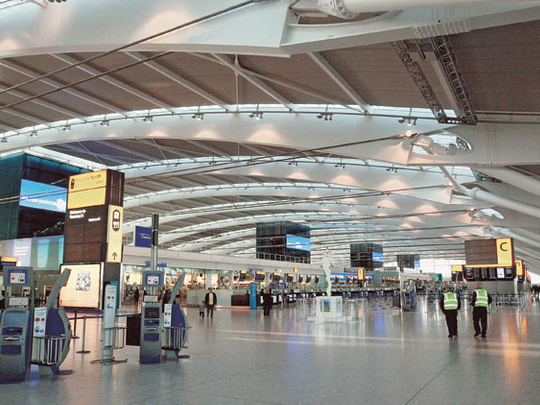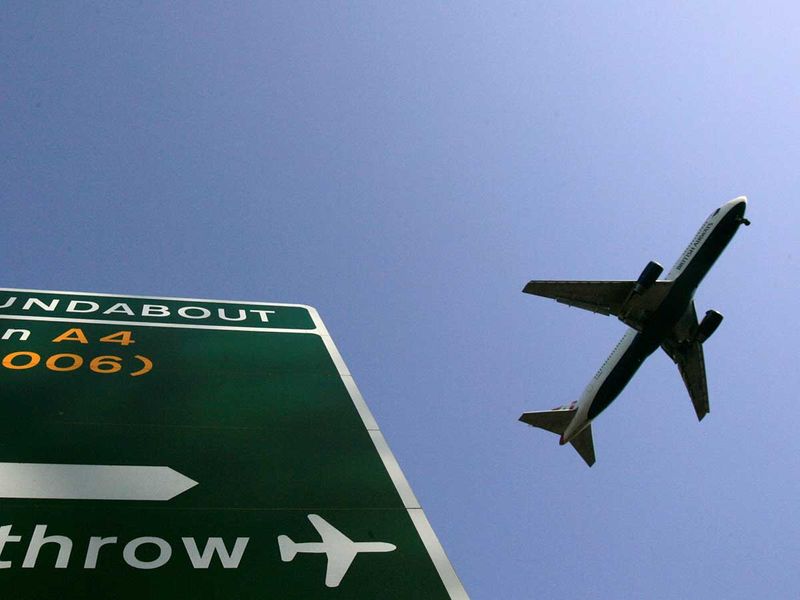
London: European airlines are set to resume flying this month, just in time to haul plucky travelers willing to don a face mask to escape for the sunshine of Spain or Greece.
The normally busy summer season has the potential to bring relief to the worst-hit region in an industry that's been slammed by the global coronavirus pandemic. Yet pulling the fleet out of mothballs as country lockdowns loosen also has its risks.
"As soon as you get your aircraft up in the air again you have 100 per cent of your cost back," Rickard Gustafson, CEO of Scandinavian carrier SAS AB, said last week. "It's going to take time before you have all of the passengers back."
Short-haul preference
Schedules announced so far reflect a gulf in demand between the faster-recovering domestic and regional trade, and long-haul services heavily reliant on business passengers - a market that could remain in the doldrums for years. While there's no clear view on just how quickly would-be travelers will shrug off COVID-19 related concerns, low-cost carriers are taking a bullish view on people's willingness to fly.
EasyJet aims to restart on June 15, with Ryanair Holdings Plc following a few weeks later and targeting half its usual traffic by the third quarter. Wizz Air Holdings Plc, Europe's third-largest discounter, expects to restore as much as 60 per cent of normal capacity during summer, increasing to 80 per cent over the winter low season, said CEO Jozsef Varadi.
"We think there's substantially more demand out there than we'll be able to serve," Varadi said. "It's not a reluctance to get on board a plane that will hold us back but continuing restrictions on travel."
For full-service carriers that are focused on sectors where customers are slow to return, it makes sense to keep jets idle even as lockdowns ease, according to SAS CEO Gustafson. The Stockholm-based airline will deploy only 20 of its 163 aircraft by mid-June as it ramps up "very, very carefully".
Keep them on the ground
Air France-KLM likewise expects to keep 80 of capacity mothballed during the June-August period that marks the traditional summer season. Trans-Atlantic specialist Virgin Atlantic Airways Ltd. will serve only five routes before August.
With airlines effectively guessing at demand levels, their plans should be seen as "initial ambitions rather than hard forecasts," said UBS analyst Jarrod Castle. He estimates overall summer traffic will be less than 50 per centof the usual level in Europe. That tallies with ticket revenue figures from data provider Skytra suggesting third-quarter receipts will be down close to 60 per cent in most European countries.
Carriers face a particular dilemma because the summer season can contribute all of their earnings even in a good year. That's increased the temptation to build up flights now in a gamble that cooped-up north Europeans are craving time on Mediterranean beaches.
In doing so they're betting that people won't be put off by the prospect of sitting cheek-by-jowl with 150 others after months of social distancing, and that the sharpest economic slowdown in years won't prompt them to stay home and hang on to their cash.
Global demand is slowly beginning to revive, led by a recovery in domestic traffic in the Asia-Pacific region, especially China, where COVID-19 originated and has now largely abated.
In Europe and the US, investors are starting to bet on a similar recovery. The Stoxx Europe 600 Travel & Leisure Index is up 15 per cent in the past month, while the S&P 500 Airlines Index has surged some 46 per cent.

No winning them back quickly
Still, the outlook remains cloudy. Air passenger demand will be "severely depressed in 2021," Moody's Investors Service said in a June 4 report. It expects global air traffic measured by revenue-passenger-kilometers to decline by 65-75 per cent this year, and 35-55 per cent next year, from 2019 levels.
Europe has been hit especially hard because individual countries took unilateral action in closing down borders, quickly wiping out even shorter flights. That contrasts with the US, where the disease arrived later and around a third of domestic services have been maintained.
Groundings bottomed out worldwide on April 21 and services have since increased by 30 per cent, according to the International Air Transport Association, though they're down almost 75 per cent from January levels. Web searches for air travel have surpassed those relating to the coronavirus, indicating a shift in the public mood, Brian Pearce, the trade group's chief economist, said.
Low-cost carriers are best-placed to benefit in Europe since demand for leisure flights and trips to visit friends and family will rebound much earlier than corporate sales, according to Alexandre De Juniac, IATA's CEO.
Until COVID-19 is contained, the disease will limit prospects for a comeback. Job cuts targeted by airlines and aerospace companies in Europe and the Middle East since the outbreak began have topped 100,000, based on a Bloomberg tally. In the UK, a self-quarantine regime for arriving passengers is due to be introduced starting Monday, slowing any rebound.
A long wait for corporate travellers
Business travel may drop 20 per cent until a vaccine is developed as large trade conferences are put on hold, said Daniel Roeska, an analyst at Sanford C. Bernstein. "It will take five years until we again see 2019 demand levels,'' he said. "This is much bigger than anything we have seen in the past."
For the weaker carriers, a lack of financial muscle may also inhibit their ramp-up plans. Norwegian Air Shuttle ASA, for example, competes in the same low-cost sector as Ryanair but is planning to bring back a smaller fleet after self-imposed "hibernation'.' Long-haul and European short-haul operations outside of Norway will be grounded until next year.
Some of the biggest players in the region have question marks hanging over their heads.
Fraport AG, which runs Frankfurt airport, sees overall traffic taking more than three years to return to 2019 levels. It's the main base for Deutsche Lufthansa AG, Europe's largest airline, which plans to cut its fleet by 100 aircraft and says 200 more may remain grounded until 2022 as it taps 10 billion euros in state funds.
Lufthansa said Thursday it'll gear up to cover 90 per cent of its short- and medium-haul destinations by September, and 70 per cent of longer runs. While the German carrier hasn't specified frequencies, there's a risk that airlines ramping up will tip the summer market into oversupply.
Ryanair CEO Michael O'Leary has predicted a price war as carriers bolstered by bailouts chase too few passengers.
Most vulnerable to developments on the medical front may be the Gulf carriers, which are locked into the toughest corner of the aviation market - long-distance and business travel - ferrying people around the world via hubs with only small local populations.
Tim Clark, president of Dubai-based Emirates, the world's biggest long-haul airline, has said the entire jetliner orderbook is under review and that future deployment of the A380 superjumbo at the heart of its fleet may hinge on prospects for a vaccine becoming available.
In the optimistic, or left-hand scenario, "you're ramping up operations very rapidly", if not getting back to 100 per cent by summer 2021, Clark said.
"If you hear in the next few months that a vaccine will not be found, then the right hand will kick in and that will affect not just Emirates but everybody else."








